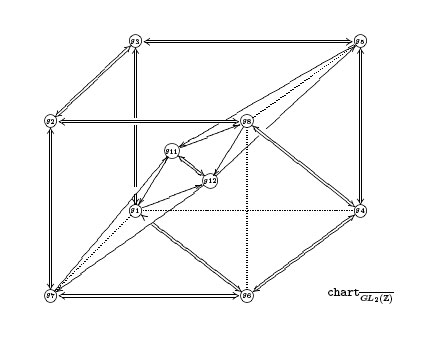Unlike the
cooler people out there, I haven’t received my
_pre-ordered_ copy (via AppleStore) of Tiger yet. Partly my own fault
because I couldn’t resist the temptation to bundle up with a
personalized iPod Photo!
The good news is that it buys me more time to follow the
housecleaning tips. First, my idea was to make a CarbonCopyClooner–
image of my iBook and put it on the _iMac_ upstairs which I
rarely use these days, do a clean
Tiger install on the iBook and gradually copy over the essential
programs and files I need (and only those!). But reading the
macdev-article, I think it is better to keep my iBook running Panther
and experiment with Tiger on the redundant iMac. (Btw. unless you want
to have a copy of my Mac-installation there will be hardly a point
checking this blog the next couple of weeks as I intend to write down
all details of the Panther/Tiger switch here.)
Last week-end I
started a _Paper-rescue_ operation, that is, to find among the
multiple copies of books/papers/courses, the ones that contain all the
required material to re-TeX them and unfortunately my _archive_
is in a bad state. There is hardly a source-file left of a paper prior
to 1999 when I started putting all my papers on the arXiv.
On the other hand, I do
have saved most of my undergraduate courses. Most of them were still
using postscript-crap like _epsfig_ etc. so I had to convert all
the graphics to PDFs (merely using Preview ) and
modify the epsfig-command to _includegraphics_. So far, I
converted all my undergraduate _differential geometry_ courses
from 1998 to this year and made them available in a uniform
screen-friendly viewing format at TheLibrary/undergraduate.
There are two
ways to read the changes in these courses over the years. (1) as a shift
from _differential_ geometry to more _algebraic_ geometry
and (2) as a shift towards realism wrt.the level of our undegraduate
students. In 1998 I was still thinking
that I could teach them an easy way into Connes non-commutative standard
model but didn’t go further than the Lie group sections (maybe one day
I’ll rewrite this course as a graduate course when I ever get
reinterested in the Connes’ approach). In 1999 I had the illusion that
it might be a good idea to introduce manifolds-by-examples coming from
operads! In 2000 I gave in to the fact
that most of the students which had to follow this course were applied
mathematicians so perhaps it was a good idea to introduce them to
dynamical systems (quod non!). The 2001 course is probably the
most realistic one while still doing standard differential geometry. In
2002 I used the conifold
singularity and conifold transitions (deformations and blow-ups) as
motivation but it was clear that the students did have difficulties with
the blow-up part as they didn’t have enough experience in
_algebraic_ geometry. So the last two years I’m giving an
introduction to algebraic geometry culminating in blow-ups and some
non-commutative geometry.
